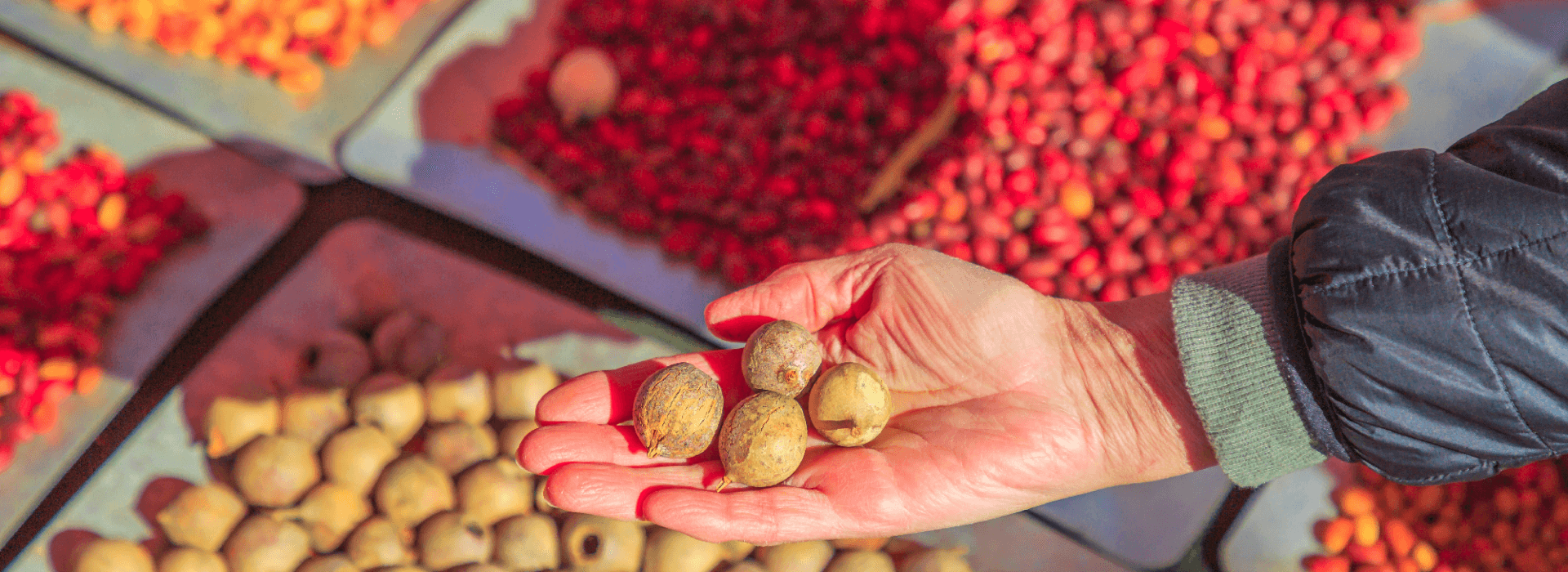Indigenous and Native Fruits Around the World
For National Indigenous Peoples Day, a holiday observed by Canadians each June, we’ve decided to give a quick rundown of some healthy native fruits from around the globe. Indigenous fruits that can easily lend themselves to our everyday favourite desserts! Think along the lines of durian ice cream, rambutan smoothies, or even buffaloberry jam. There are plenty of uncommon backyard fruits that we can convert into pies, tarts, cakes, and more. So, why not tuck into something local whilst acknowledging the traditional landowners who came before us all.
North America
In North America, the most famous homegrown fruits include grapes, cranberries, and blueberries, but what about the huckleberry? This berry is normally associated with Mark Twain’s young protagonist. Initially, Native American and First Nations people collected it along the Pacific Coast. To this day, we can still find it throughout British Columbia, Montana, and as far east as Polly’s Cove in Nova Scotia. One can use this delicious native fruit in pudding, pies, teas, and syrups – much like the buffaloberry that grows in Canada’s prairies.
South America
Let’s shift our coordinates. As you can imagine, South America has some pretty impressive exotic fruits they can be proud to call homegrown. These include guavas, papayas, passion fruits, and pineapples. One native fruit that’s common to the Amazon rainforest is the araza, which is round and yellow. Often, people will make juices, jellies, ice cream, and marmalades with it. Another curious fruit native to these lands is the cherimoya. Sticking with the Mark Twain theme, he actually claimed it was “the most delicious fruit known to men.”
Europe
Now to jump across to Europe. We must recognize blackberries and raspberries that give us endless options for pies, juices, jams, and tarts. But we hadn’t come across a damson before. This type of dark plum is said to have an astringent taste that makes it suitable for jams and preserves… Another berry native to Europe and similar to the blueberry is the bilberry. Its alternative names, wimberry and whortleberry, are just as fun to say out loud!
The Mediterranean
Sailing to the Mediterranean, we can see native fruits such as black mulberries, date palms, pomegranates, and sycamore figs. And the Indian subcontinent gives us gems like lychees, mangoes, and persimmons. The durian and rambutan, mentioned above, also call this region home, along with one of the most interestingly named ziziphus jujuba! These jujubes are distantly related to the buckthorn (another North American native). Typically, people will dry them and eat them as a snack. English explorer, Sir Richard Burton, described them as tasting “like a bad plum, an unrepentant cherry and an insipid apple“. This only makes us want to taste one more!
Austronesia and New Guinea
Austronesia and New Guinea are home to some fruits like the longan, a light-brownish cousin to the lychee. But another interesting native to these parts is the persimmon-doppelgängers, button mangosteens. These fruits apparently taste like tangerines. Yum. Further south in Australia, some of their indigenous native fruits include the emu apple, the kakadu plum, and the pigface – which contrary to the name sounds a lot more appealing when called by its other name, the angular sea-fig. This grows a beautiful pink flower and supposedly the pulp tastes like salty strawberry or kiwifruit.
Africa
While it’s harder to come by fruits indigenous to Africa, we can certainly acknowledge the yams and rice that are native to their lands and can provide delicious pudding bases. We can also take the time to mention another ingredient that grows naturally in Africa and is very dessert friendly, the coffee bean!
To wrap things up, we still believe there’s something impressive about taking something, and adapting it to be your own, but there’s something to be said of foraging for something on your own doorstep and finding ways to incorporate it into your life – something First Peoples have done for generations. While our list of native fruits is far from complete, if you have a chance to celebrate National Indigenous Peoples Day, why not look for something with a more local flavour!





